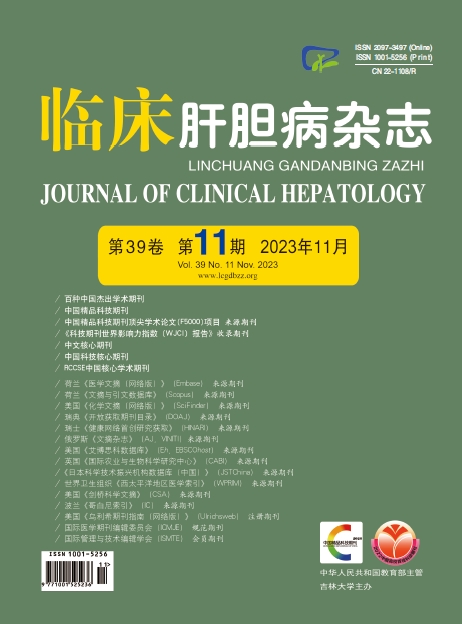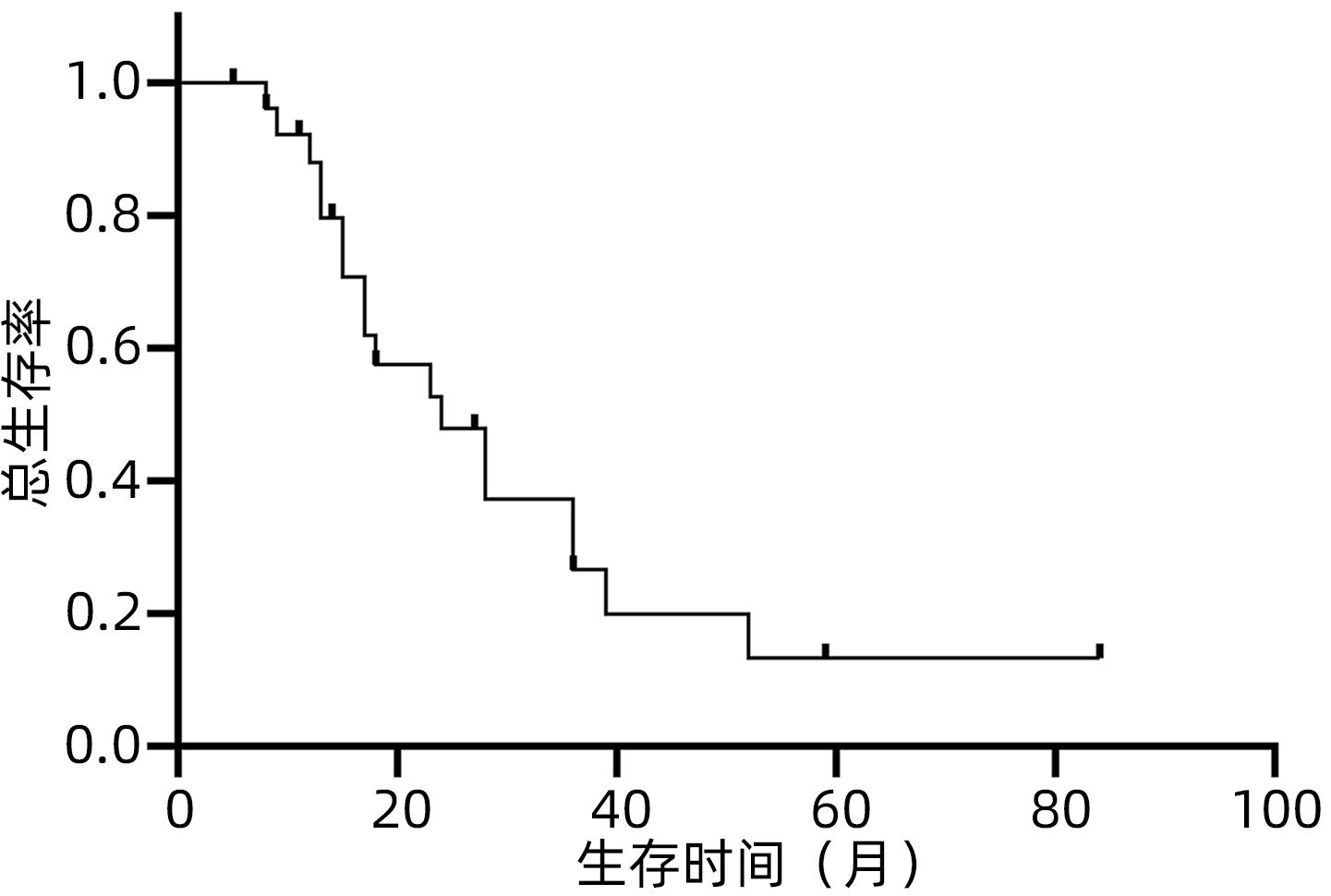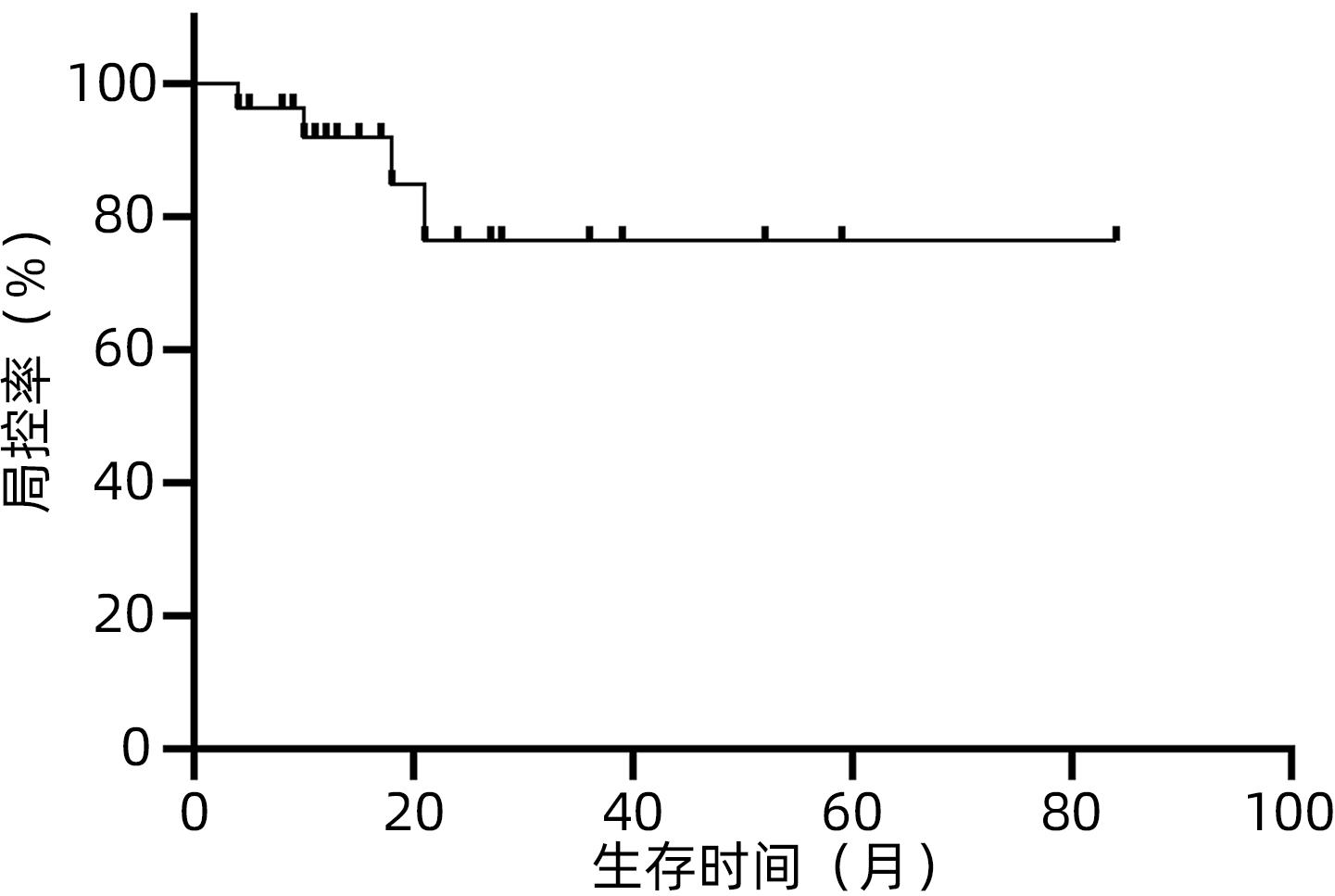| [1] |
BERTUCCIO P, MALVEZZI M, CARIOLI G, et al. Global trends in mortality from intrahepatic and extrahepatic cholangiocarcinoma[J]. J Hepatol, 2019, 71( 1): 104- 114. DOI: 10.1016/j.jhep.2019.03.013. |
| [2] |
BANALES JM, MARIN J, LAMARCA A, et al. Cholangiocarcinoma 2020: the next horizon in mechanisms and management[J]. Nat Rev Gastroenterol Hepatol, 2020, 17( 9): 557- 588. DOI: 10.1038/s41575-020-0310-z. |
| [3] |
HEWITT DB, BROWN ZJ, PAWLIK TM. Current perspectives on the surgical management of perihilar cholangiocarcinoma[J]. Cancers(Basel), 2022, 14( 9): 2208. DOI: 10.3390/cancers14092208. |
| [4] |
BRIDGEWATER JA, GOODMAN KA, KALYAN A, et al. Biliary tract cancer: Epidemiology, radiotherapy, and molecular profiling[J]. Am Soc Clin Oncol Educ Book, 2016, 35: e194- e203. DOI: 10.1200/EDBK_160831. |
| [5] |
BENAVIDES M, ANTÓN A, GALLEGO J, et al. Biliary tract cancers: SEOM clinical guidelines[J]. Clin Transl Oncol, 2015, 17( 12): 982- 987. DOI: 10.1007/s12094-015-1436-2. |
| [6] |
SAHA SK, ZHU AX, FUCHS CS, et al. Forty-year trends in cholangiocarcinoma incidence in the U.S.: intrahepatic disease on the rise[J]. Oncologist, 2016, 21( 5): 594- 599. DOI: 10.1634/theoncologist.2015-0446. |
| [7] |
NIU YJ, ZHA Y, LI SJ, et al. Analysis on prognosis related factors of patients with cholangiocarcinoma after radical resection and establishment of survival prediction model[J]. J Jilin Univ(Med Edit), 2022, 48( 4): 979- 987. DOI: 10.13481/j.1671-587X.2022041.
|
| [8] |
KHAN SA, DAVIDSON BR, GOLDIN RD, et al. Guidelines for the diagnosis and treatment of cholangiocarcinoma: an update[J]. Gut, 2012, 61( 12): 1657- 1669. DOI: 10.1136/gutjnl-2011-301748. |
| [9] |
KOZAK MM, TOESCA D, VON EYBEN R, et al. Stereotactic body radiation therapy for cholangiocarcinoma: optimizing locoregional control with elective nodal irradiation[J]. Adv Radiat Oncol, 2020, 5( 1): 77- 84. DOI: 10.1016/j.adro.2019.08.003. |
| [10] |
FRAKULLI R, BUWENGE M, MACCHIA G, et al. Stereotactic body radiation therapy in cholangiocarcinoma: a systematic review[J]. Br J Radiol, 2019, 92( 1097): 20180688. DOI: 10.1259/bjr.20180688. |
| [11] |
RAY CE EDWARDS Jr,, MITH MT, et al. Metaanalysis of survival, complications, and imaging response following chemotherapy-based transarterial therapy in patients with unresectable intrahepatic cholangiocarcinoma[J]. J Vasc Interv Radiol, 2013, 24( 8): 1218- 1226. DOI: 10.1016/j.jvir.2013.03.019. |
| [12] |
KOAY EJ, ODISIO BC, JAVLE M, et al. Management of unresectable intrahepatic cholangiocarcinoma: how do we decide among the various liver-directed treatments?[J]. Hepatobiliary Surg Nutr, 2017, 6( 2): 105- 116. DOI: 10.21037/hbsn.2017.01.16. |
| [13] |
CRANE CH, MACDONALD KO, VAUTHEY JN, et al. Limitations of conventional doses of chemoradiation for unresectable biliary cancer[J]. Int J Radiat Oncol Biol Phys, 2002, 53( 4): 969- 974. DOI: 10.1016/s0360-3016(02)02845-6. |
| [14] |
BUJOLD A, MASSEY CA, KIM JJ, et al. Sequential phase I and II trials of stereotactic body radiotherapy for locally advanced hepatocellular carcinoma[J]. J Clin Oncol, 2013, 31( 13): 1631- 1639. DOI: 10.1200/JCO.2012.44.1659. |
| [15] |
MAHADEVAN A, MIKSAD R, GOLDSTEIN M, et al. Induction gemcitabine and stereotactic body radiotherapy for locally advanced nonmetastatic pancreas cancer[J]. Int J Radiat Oncol Biol Phys, 2011, 81( 4): e615-622. DOI: 10.1016/j.ijrobp.2011.04.045. |
| [16] |
MAHADEVAN A, JAIN S, GOLDSTEIN M, et al. Stereotactic body radiotherapy and gemcitabine for locally advanced pancreatic cancer[J]. Int J Radiat Oncol Biol Phys, 2010, 78( 3): 735- 742. DOI: 10.1016/j.ijrobp.2009.08.046. |
| [17] |
SUN J, WANG Q, HONG ZX, et al. Stereotactic body radiotherapy versus hepatic resection for hepatocellular carcinoma(≤5 cm): a propensity score analysis[J]. Hepatol Int, 2020, 14( 5): 788- 797. DOI: 10.1007/s12072-020-10088-0. |
| [18] |
BISELLO S, CAMILLETTI AC, BERTINI F, et al. Stereotactic radiotherapy in intrahepatic cholangiocarcinoma: A systematic review[J]. Mol Clin Oncol, 2021, 15( 2): 152. DOI: 10.3892/mco.2021.2314. |
| [19] |
KOAY EJ, OWEN D, DAS P. Radiation-induced liver disease and modern radiotherapy[J]. Semin Radiat Oncol, 2018, 28( 4): 321- 331. DOI: 10.1016/j.semradonc.2018.06.007. |
| [20] |
DEOLIVEIRA ML, CUNNINGHAM SC, CAMERON JL, et al. Cholangiocarcinoma: thirty-one-year experience with 564 patients at a single institution[J]. Ann Surg, 2007, 245( 5): 755- 762. DOI: 10.1097/01.sla.0000251366.62632.d3. |
| [21] |
Expert Group of the State Key Project on Infectious Diseaseson‘Novel Strategies of Comprehensive and IndividualizdSurgical Treatment of Viral Hepatitis-related Liver Cancer’ from the Ministry of Science and Technology of China. Chinese expert consensus on the surgical management ofintrahepatic cholangiocarcinoma(2020 edition)[J]. Chin J Dig Surg, 2021, 20( 1): 1- 15. DOI: 10.3760/cma.j.cn115610-20201211-00777. |
| [22] |
REN B, GUO Q, YANG Y, et al. A meta-analysis of the efficacy of postoperative adjuvant radiotherapy versus no radiotherapy for extrahepatic cholangiocarcinoma and gallbladder carcinoma[J]. Radiat Oncol, 2020, 15( 1): 15. DOI: 10.1186/s13014-020-1459-x. |
| [23] |
HONG TS, WO JY, YEAP BY, et al. Multi-institutional phase Ⅱ study of high-dose hypofractionated proton beam therapy in patients with localized, unresectable hepatocellular carcinoma and intrahepatic cholangiocarcinoma[J]. J Clin Oncol, 2016, 34( 5): 460- 468. DOI: 10.1200/JCO.2015.64.2710. |
| [24] |
POLISTINA FA, GUGLIELMI R, BAIOCCHI C, et al. Chemoradiation treatment with gemcitabine plus stereotactic body radiotherapy for unresectable, non-metastatic, locally advanced hilar cholangiocarcinoma. Results of a five year experience[J]. Radiother Oncol, 2011, 99( 2): 120- 123. DOI: 10.1016/j.radonc.2011.05.016. |
| [25] |
PARK SS, DONG H, LIU X, et al. PD-1 restrains radiotherapy-induced abscopal effect[J]. Cancer Immunol Res, 2015, 3( 6): 610- 619. DOI: 10.1158/2326-6066.CIR-14-0138. |
| [26] |
POSTOW MA, CALLAHAN MK, BARKER CA, et al. Immunologic correlates of the abscopal effect in a patient with melanoma[J]. N Engl J Med, 2012, 366( 10): 925- 931. DOI: 10.1056/NEJMoa1112824. |
| [27] |
DENG L, LIANG H, BURNETTE B, et al. Radiation and anti-PD-L1 antibody combinatorial therapy induces T cell-mediated depletion of myeloid-derived suppressor cells and tumor regression[J]. Oncoimmunology, 2014, 3: e28499. DOI: 10.4161/onci.28499. |
| [28] |
KREIDIEH M, ZEIDAN YH, SHAMSEDDINE A. The combination of stereotactic body radiation therapy and immunotherapy in primary liver tumors[J]. J Oncol, 2019, 2019: 4304817. DOI: 10.1155/2019/4304817. |
| [29] |
BAO G, LIU H, MA Y, et al. The clinical efficacy and safety of different biliary drainages in malignant obstructive jaundice treatment[J]. Am J Transl Res, 2021, 13( 6): 7400- 7405.
|








 DownLoad:
DownLoad:

